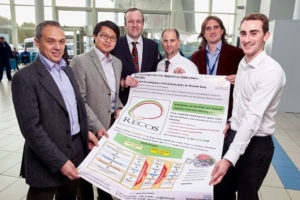Beryl Oppenheim, a microbiologist from the NIHR SRMRC, has been involved with the pioneering use of whole genome sequencing in real-time to help control a hospital outbreak of Acinetobacter baumannii.
A. baumannii is a multi-drug resistant pathogen found in hospitals across the globe and emerged as a significant threat to casualties in the Iraq and Afghanistan wars. It affects severely ill patients, particularly trauma and burns patients, often leading to pneumonia and bloodstream infections.
Healthcare-associate infection (HAIs) such as A. baumannii are estimated to cost the UK £1 billion a year and, at any given time, one in every 15 patients will have a HAI. Whole genome sequencing, which sequences an organism’s entire DNA, is thought to be a promising new addition to the toolkit for controlling HAIs, as it is both a rapid and cost-effective way of tracking and controlling them.
In the article the researchers report how whole genome sequencing was used to control an outbreak of A. baumannii at Queen Elizabeth Hospital Birmingham in 2011.
The outbreak began following the admittance of a military patient from Afghanistan with blast injuries and lasted for 80 weeks – making it one of the longest outbreaks ever described for this pathogen. The patient was carrying a novel strain of the bacterium that had not previously been observed in the region’s hospitals. After first using traditional methods to try and contain the pathogen, the researchers decided to switch to whole genome sequencing mid-way through the outbreak.
Sampling patients and the environment, the researchers were able to identify 74 patients belonging to the outbreak. They then determined the detailed genetic makeup of the bacteria carried by each of these patients and used this data, with information about the ward that the patients were housed in, and the date of their first positive tests, to identify nearly 70 possible transmission events.
Armed with this detailed information, the researchers were able to pinpoint transmission hot spots within the hospital, which included an operating theatre and a specialised bed for burns patients. Deep cleaning of these transmission sites followed and new decontamination protocols were put in place by the hospital. In May 2013 the outbreak was declared closed.
This research, part-funded by the NIHR SRMRC, has clearly demonstrated the benefits of using novel technology to control HAIs and reduce infection in hospitals.
To read the original article published in Genome Medicine click here.





